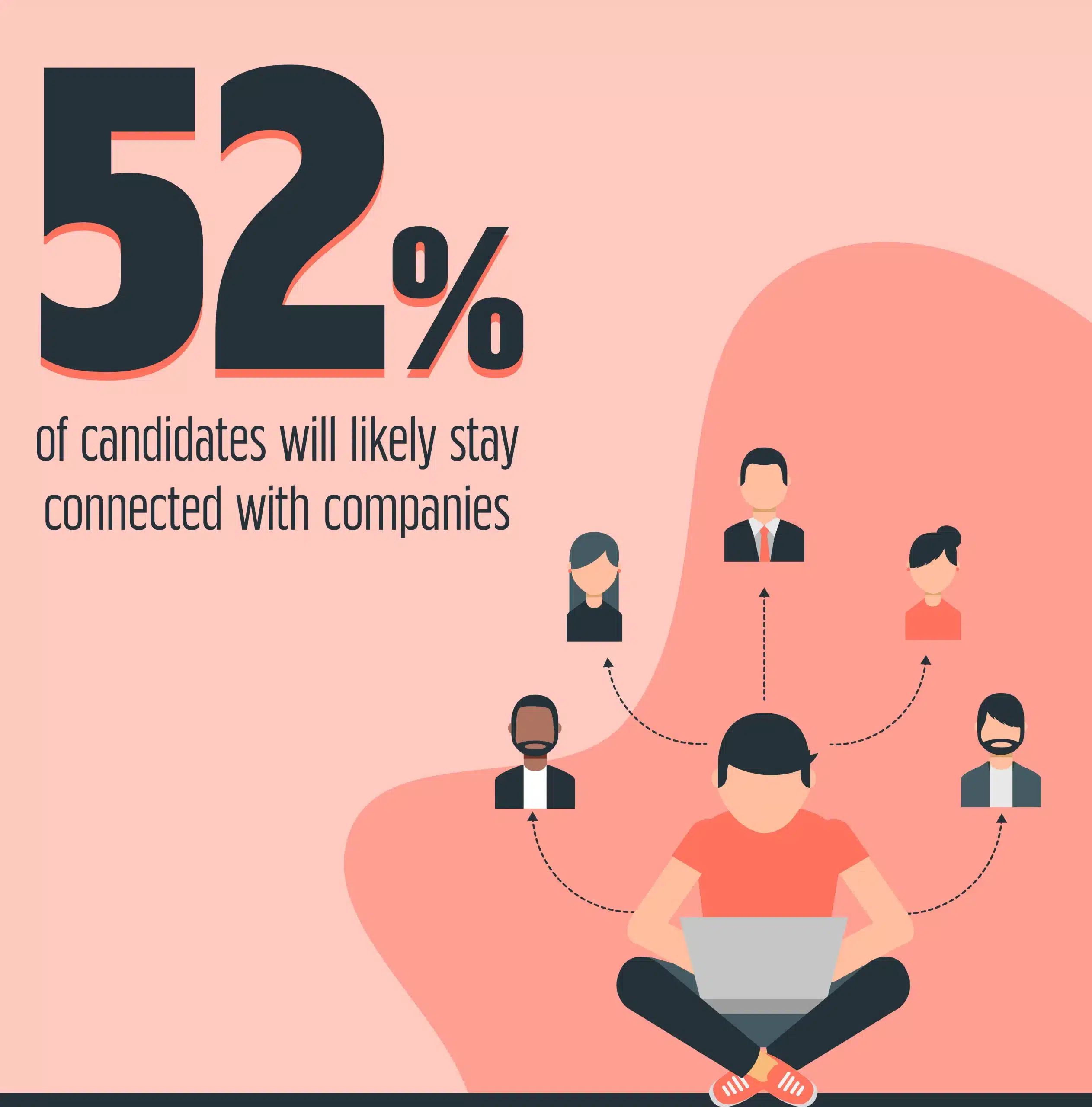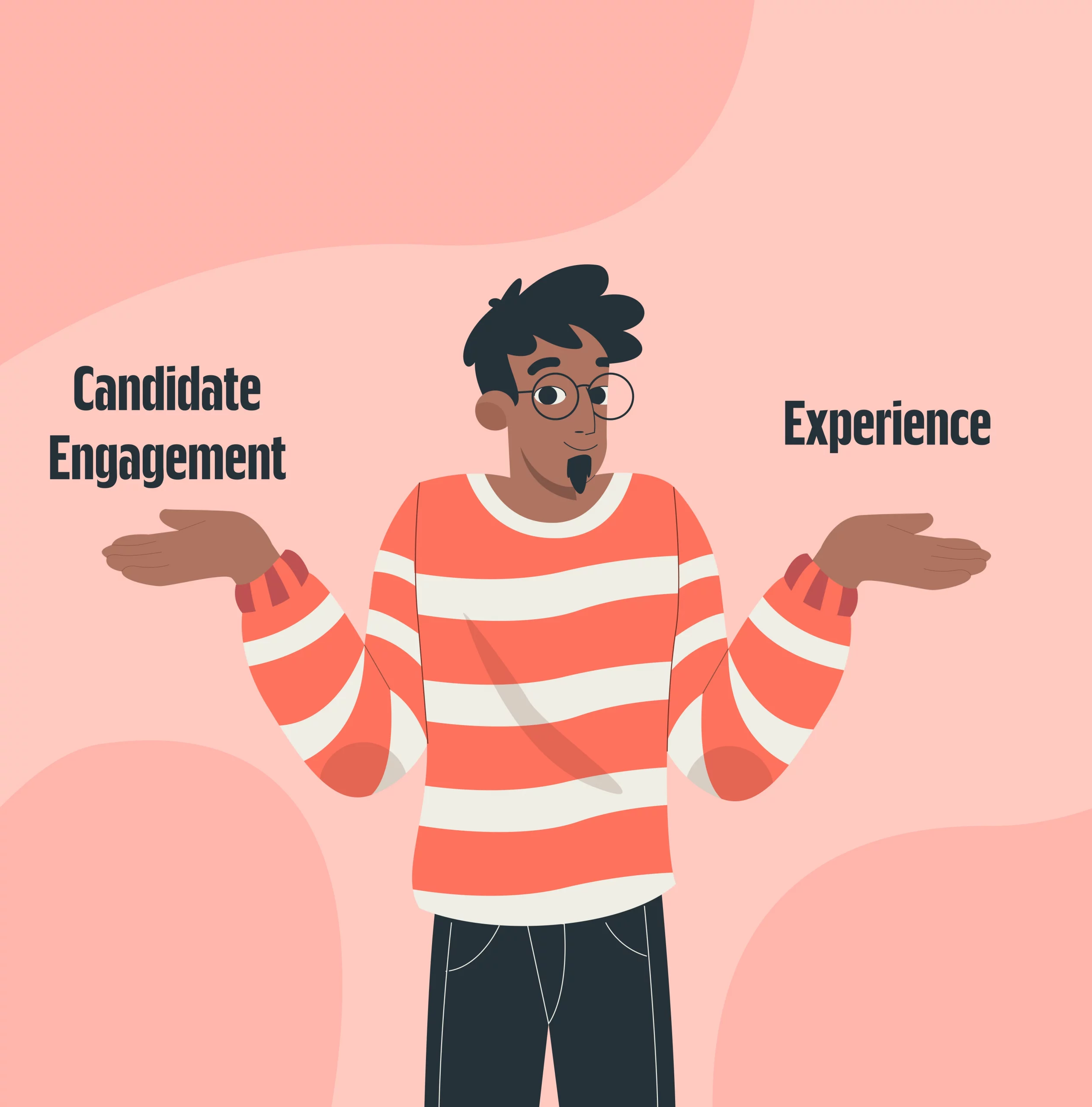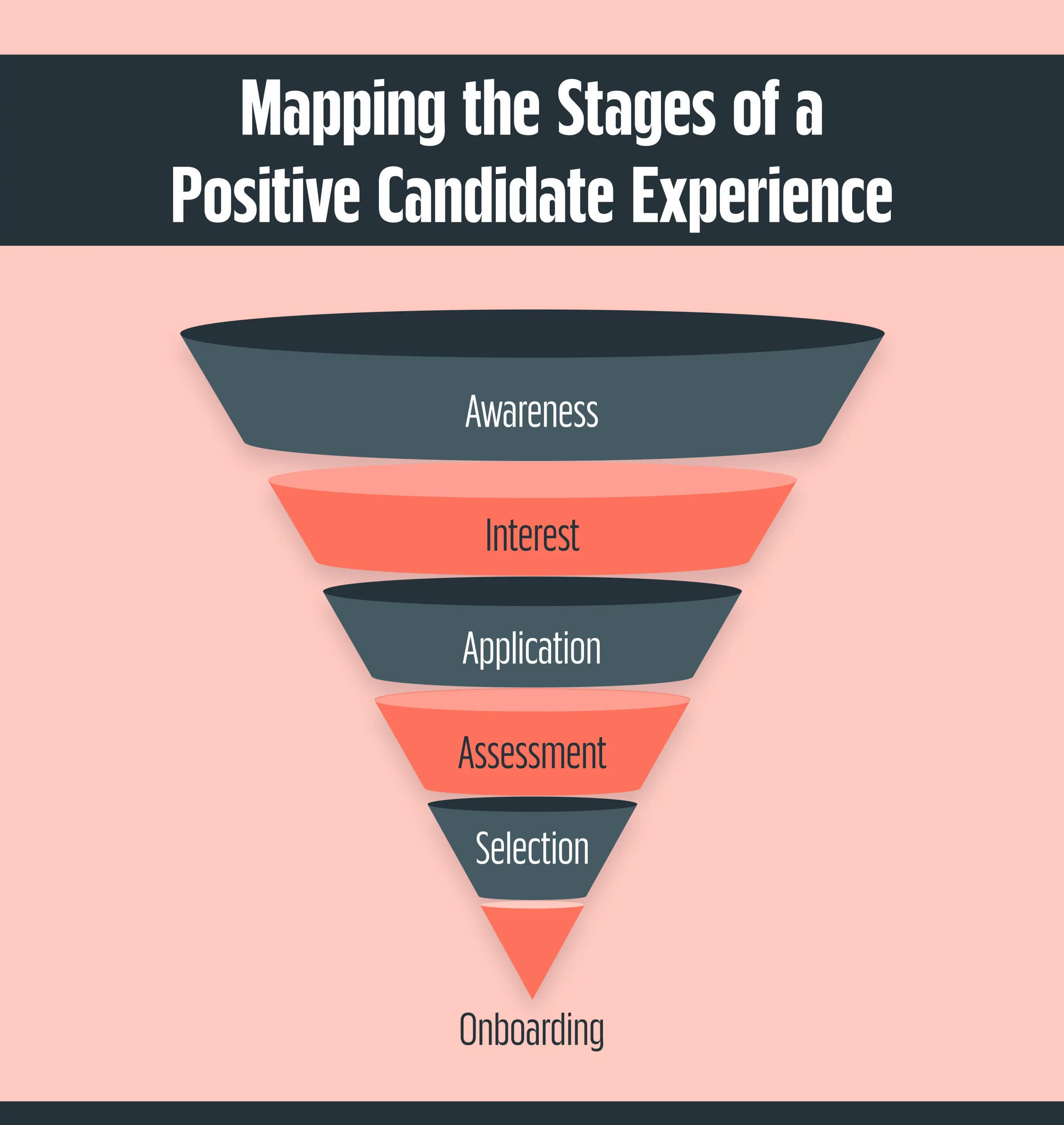Table of content
Keeping top talent around requires a smart approach that focuses on engaging with candidates. Every interaction, from the first application to the final interview, is shaped by your expertise and efforts and influences how a candidate perceives your company.
Recent stats show that 52% of candidates will likely stay connected with companies that give them helpful feedback, no matter the interview result. This data highlights how critical candidate engagement is during the hiring process. When candidates get helpful feedback on their performance, it helps them improve their skills and boosts the employer’s reputation.
In our complete guide, “Everything You Need to Know About Candidate Engagement,” we will explore how to build smoother engagement with potential hires in detail.
What is Candidate Engagement? Don’t Lose Them Before You Win Them!
Candidate engagement is the process of building and maintaining a positive relationship with potential hires throughout the recruitment and hiring process. It involves creating meaningful interactions to keep candidates interested and informed about your company and job opportunities.
Why is it important? Treating candidates well, even if they don’t get the job, can leave them with a positive impression of your company. They may speak positively about your company to others or even consider applying for other positions in the future.
However, companies sometimes overlook candidate engagement when they rush to fill positions. It’s crucial to remember the people behind the applications and to treat them well throughout the process.
It’s essential to prioritize candidate engagement at every stage, from writing clear job ads to providing feedback after interviews. Each interaction with a candidate is an opportunity to demonstrate that you value and care about them.
By prioritizing candidate engagement, you will attract good employees and build strong employer branding, making your workplace more inviting.
The Advantages of Candidate Engagement (A Win-Win Strategy)?
Engaging with candidates throughout the hiring process benefits both the organization and the candidates. It improves the candidate experience, strengthens the talent pipeline, and enhances the employer brand. This win-win strategy fosters transparency, attracts top talent, and reduces time-to-fill for open positions.
-
Become the Cool Company Everyone Wants to Work For
Engaging with candidates throughout the hiring process shows that your company values and respects their time and effort. This helps create a positive impression of your company, making it more attractive to potential employees. By demonstrating an engaging and respectful hiring process, your company can become known as the “cool” place everyone wants to work for.
-
Stop Applications From Disappearing
Candidate engagement can help prevent qualified applicants from losing interest or dropping out of the hiring process. By maintaining open and consistent communication with candidates, you can ensure that their applications are actively considered and that they remain interested in the opportunity.
-
Find the Perfect Fit, Not Just Anyone
Engaging with candidates allows you to better understand their skills, experience, and personality, leading to more informed hiring decisions. By building relationships with candidates, you can determine if they align with the company culture and possess the qualities needed to excel in the role. This engagement helps you find the perfect fit for your team rather than just filling a position with anyone.
-
Happy Candidates Become Happy Employees
Positive candidate experiences translate into positive employee experiences. You set the stage for a strong employer-employee relationship by engaging with candidates respectfully and transparently. This can contribute to higher job satisfaction, increased productivity, and better retention rates, ultimately leading to a happier and more successful workforce.
Candidate Engagement vs. Experience: What’s the Difference?
Candidate engagement and candidate experience are two pivotal aspects of the recruitment process. Although often used interchangeably, they hold distinct meanings and implications.
Candidate engagement refers to the strategies and practices employed by an organization to involve potential job candidates during the recruitment process. It’s about creating recruitment marketing and building relationships with candidates through various touchpoints such as social media, email campaigns, recruitment events, and personalized communication. The goal is to keep candidates interested, informed, and enthusiastic about the opportunity. Engagement is a proactive effort to ensure candidates feel valued and connected throughout the hiring journey.
Key elements of candidate engagement include:
- Consistent Communication: Keeping candidates in the loop about their application status and next steps.
- Brand Representation: Showcasing the company culture and values to attract like-minded individuals.
- Interactive Processes: Involving candidates in discussions, feedback loops, and engaging and informative assessments.
On the other hand, candidate Experience encompasses the overall perception and feelings a candidate has about the organization’s hiring process. It’s the sum of all candidate interactions with the company, from the job application to the final hiring decision. A positive candidate experience is smooth, transparent, respectful, and reflects well on the employer’s brand, regardless of the outcome of the application.
Key elements of candidate experience include:
- User-Friendly Application Process: An easy-to-navigate job portal with a straightforward application process.
- Respectful Treatment: Timely responses and constructive feedback, showing respect for the candidate’s time and effort.
- Clear Expectations: Providing detailed job descriptions and information about the recruitment stages.
In short, while engagement is about active involvement and interaction with the candidate, experience is the candidate’s takeaway impression of the entire recruitment process. Both are crucial for attracting and retaining top talent and when executed well, they can significantly enhance an organization’s reputation and reduce recruitment costs as well.
How Employer Branding Drives Candidate Engagement?
Employer branding is pivotal to expand talent pool in today’s competitive job market. It’s the process by which a company establishes its reputation as an employer among current employees, potential candidates, and other stakeholders. Here’s how employer branding can drive candidate engagement:
- Attracting Talent: A strong employer brand communicates what it’s like to work at a company, what the company values, and how it supports its employees. This transparency can attract candidates who align with these values, increasing the likelihood of their engagement throughout the recruitment process.
- Building Trust: Consistent and positive messaging about a company’s culture and work environment builds trust with potential candidates. When candidates trust a brand, they’re more likely to engage with it, whether that’s through applying for a job or participating in community events.
- Enhancing Candidate Experience: Employer branding doesn’t stop attracting candidates; it extends to the candidate experience during recruitment. A brand that treats candidates respectfully and provides a smooth application process will see higher candidate engagement levels. 72% of candidates say a positive candidate experience is more important than the salary offered.
- Creating Advocates: Candidates with a positive experience with a company’s employer brand can become brand advocates even if they don’t get the job. They share their experiences with their network, which can lead to more engaged candidates in the future.
- Maintaining an Active Alumni Network: An engaged alum network can help portray the company’s positive image. It shows that the company values long-term relationships, which can attract candidates to engage more deeply with the employer brand.
- Showcasing Growth Opportunities: Candidates are more engaged when they see clear paths for professional development. Employer branding highlighting training programs, career progression, and learning opportunities can significantly boost candidate engagement.
Mapping the Stages of a Positive Candidate Experience
Creating a positive candidate experience is akin to guiding someone through a well-thought-out journey. Each stage is an opportunity to engage and impress potential hires. Here’s how you can map out this journey:
- Awareness: The journey begins with the candidate becoming aware of your company and its career opportunities. This stage involves making a strong first impression through employer branding and outreach efforts. You can set clear employer branding metrics to track the progress.
- Interest: Once aware, candidates should feel compelled to learn more. Provide detailed job descriptions and showcase company culture to pique their interest.
- Application: The application process should be straightforward and respectful of the candidate’s time. Ensure the application portal is user-friendly, and the instructions are clear.
- Assessment: The assessment stage should be fair and transparent, whether through interviews or tests. Communicate the criteria and provide a timeline for decisions.
- Selection: Timely communication is key when selecting candidates. Let them know promptly and with courtesy whether they are moving forward or not.
- Onboarding: For those hired, a smooth onboarding process sets the tone for their tenure at the company. Make them feel welcomed and valued from day one.
Top 5 Proven Strategies to Boost Candidate Engagement
Candidate engagement is a critical component in the recruitment process, as it significantly enhances the candidate’s experience and increases the likelihood of attracting top talent. To improve candidate engagement, consider the following strategies:
Personalize Communication:
Don’t leave candidates hanging! Provide clear and consistent communication throughout every stage of the process. This includes sending automated confirmation emails upon application, updating them on the selection timeline, and offering personalized feedback (even if they’re not ultimately chosen). Good communication respects their time and effort, fostering a positive candidate engagement experience.
Provide Clear Timelines– From Application to Offer:
Transparency builds trust. On your career page and job postings, clearly outline the interview process, your desired qualities, and the expected timeline. This allows candidates to self-select if they’re a good fit and helps you filter unqualified candidates easily, leading to a more engaged pool of applicants. Additionally, be upfront about salary ranges and company culture to avoid misleading qualified candidates.
Use Technology for Personalized Experiences:
Technology can be your friend in candidate engagement. Use applicant tracking systems (ATS) that offer automated communication features and allow for easy interview scheduling. Consider using video conferencing tools for remote candidates or those with busy schedules. Personalize the experience further by addressing candidates by name in emails and tailoring interview questions to their specific skills and experience.
Showcase Your Amazing Company Culture – Online & Off:
Your company culture is a major draw for top talent, so don’t just tell; show! Actively manage your online presence and social media platforms. Share glimpses of your work environment, employee events, and team-building activities. Encourage employee testimonials and highlight company initiatives that showcase your values. This authentic portrayal of your culture fuels candidate engagement by attracting candidates who resonate with your values.
Nurture Relationships Beyond the Hire:
Candidate engagement doesn’t end with the final hiring decision. Consider keeping a talent pool of qualified candidates who weren’t chosen for the current role but might be a perfect fit for future openings. Maintain connections through periodic updates about your company or industry trends. This ongoing engagement can lead to a loyal network of potential talent and future brand advocates.
5 Common Issues That May Weaken Your Recruitment Strategy
Engaging candidates effectively is crucial, but several common issues can hinder this process. Addressing these challenges is key to maintaining a robust talent pipeline. Here are some of the common issues in candidate engagement:
- Inadequate Communication: Lack of timely and relevant communication can leave candidates feeling disconnected and undervalued.
- Complex Application Processes: Overly complicated or lengthy application procedures can deter potential applicants and negatively impact engagement.
- Poor Candidate Experience: A negative experience during any hiring process can encourage candidates to pursue the opportunity.
- Lack of Personalization: Failing to personalize interactions can make candidates feel like another number.
- Inconsistent Follow-Up: Inconsistent or non-existent follow-up after interviews can lead to disengagement and a poor company image.
Candidate Engagement: Are You Keeping Them Hooked? Here’s How to Measure!
So, you’ve implemented a fantastic candidate engagement strategy – keeping them informed, valued, and excited throughout the recruitment process. But how can you tell if it’s working? Here’s how you can measure your candidate engagement.
Here are some key metrics you can track to gauge your candidate engagement:
- Application Completion Rate: This measures the percentage of candidates who begin and complete an application. A low completion rate could indicate a clearer or shorter application process.
- Time-to-Hire: Track the average time it takes to fill a position, from when a job is posted to the new hire’s start date. A long time-to-hire could indicate a lack of communication or inefficient processes that frustrate candidates.
- Candidate Net Promoter Score (CNPS): Similar to the Net Promoter Score (NPS) used for customer satisfaction, the CNPS measures the likelihood of candidates recommending your company to others after their interview experience. A high CNPS indicates positive candidate engagement.
- Social Media Engagement: Track how many candidates interact with your company’s social media posts about job openings or company culture. This can indicate their level of interest and engagement with your brand.
- Email Open Rates and Click-Through Rates: Monitor how many candidates open and click on links in emails you send them throughout the recruitment process. Low open rates suggest a lack of relevance or personalization in your communication.
Conclusion: Building Lasting Relationships Through Candidate Engagement
Candidate engagement is a crucial aspect of the hiring process that should not be overlooked. By implementing strategies to keep potential hires informed, valued, and connected throughout the recruitment journey, companies can create a positive impression, strengthen their employer brand, and attract top talent. Consistent communication, showcasing company culture, and involving candidates in interactive processes are essential elements of effective candidate engagement.
Prioritizing candidate engagement benefits the organization by improving the candidate experience, strengthening the talent pipeline, and enhancing the employer brand but also contributes to higher job satisfaction, increased productivity, and better retention rates, ultimately leading to a happier and more successful workforce. Therefore, investing in candidate engagement is a win-win strategy that yields lasting advantages for both the organization and the candidates.



